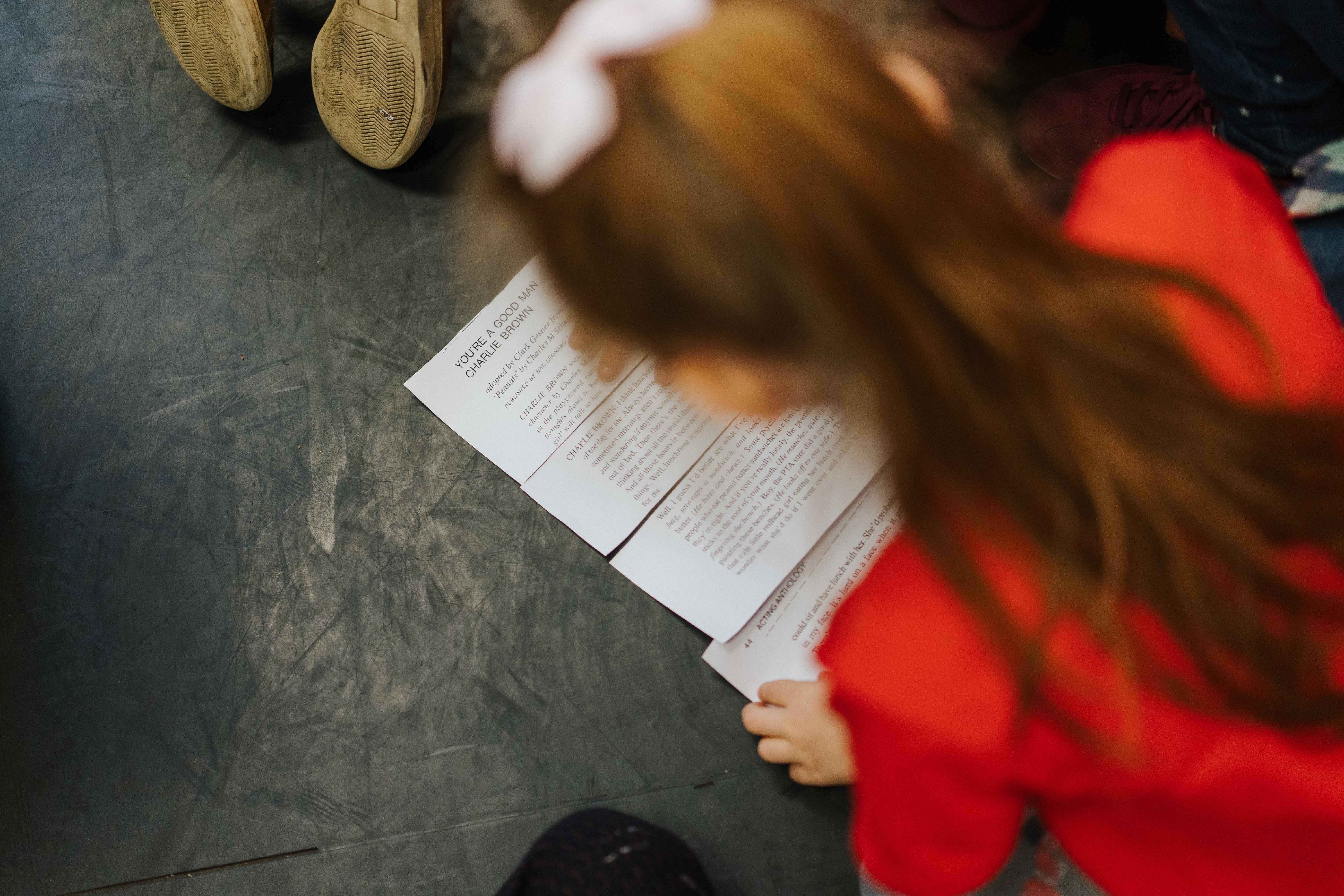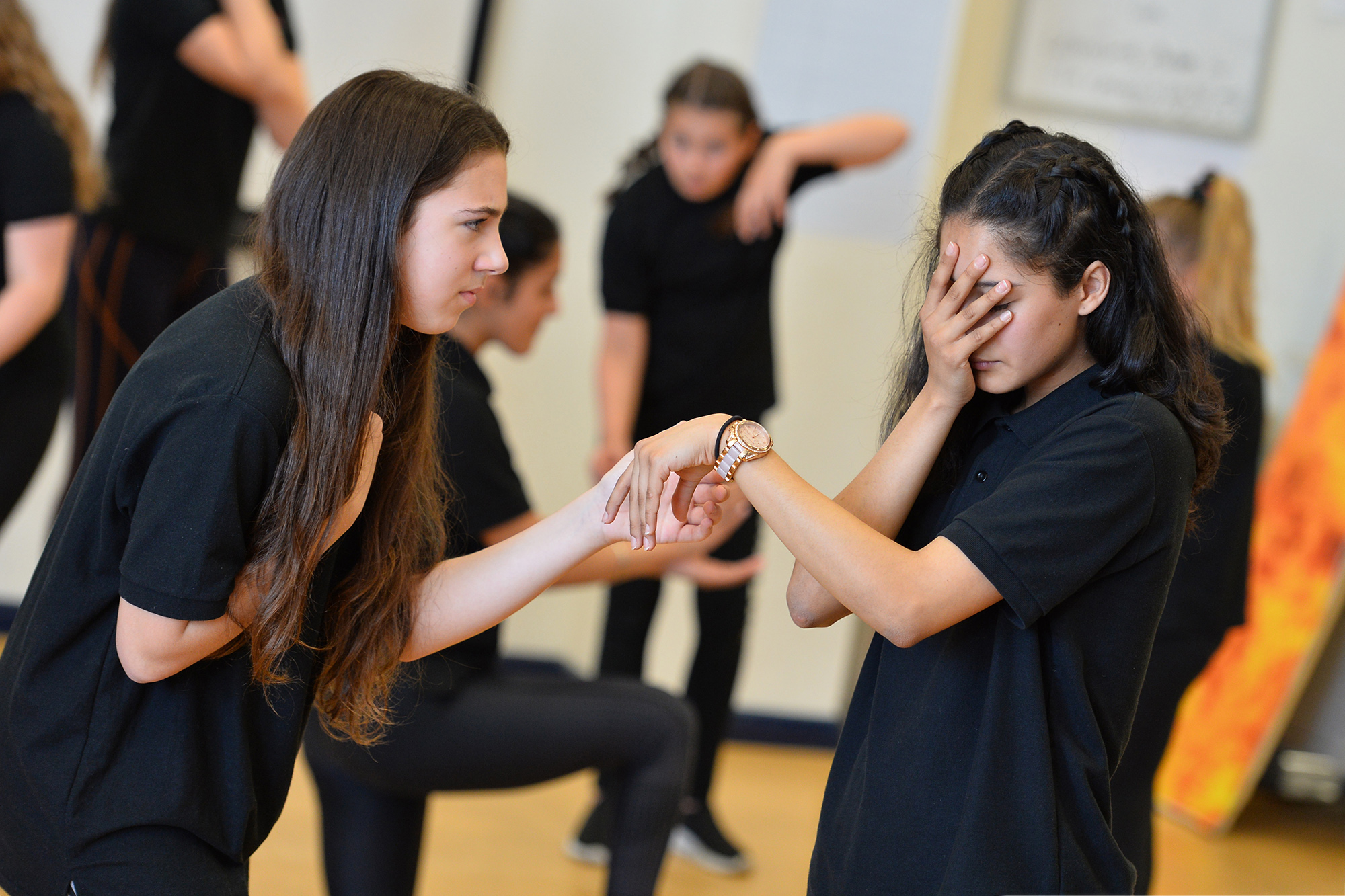
Performing prose and poetry
BY: Nicola King
09 April 2025
Our Speech and Drama exams encourage candidates to engage with a variety of literary forms including poetry, prose, and play extracts in a range of styles, and from different periods, in order to build skills around literacy, reading, interpretation and expression in bringing texts to life.
While most drama teachers will be comfortable preparing candidates to perform an extract from a play, they may be less familiar with poetry and prose. In this blog we will explore differences between performing poetry and prose, and how you can help your candidates prepare.
Structure and meaning
The most obvious difference in the performance of poetry and prose is the rhythm and structure. Poems have a rhythm and musicality, often created through rhyme, alliteration, or meter, and are written in stanzas. This creates a structure that plays a significant role in how the performance should be delivered.
Prose gives an opportunity to focus on language and character, and how to interpret the different narrative voices in the text. Written in sentences and paragraphs, it has a natural rhythm that is dependent on sentence structure and punctuation, with the focus on communication of ideas and plot. Prose can include dialogue (conversation between characters) and detailed descriptions, often used to advance a narrative or convey a deeper meaning.
Though poetry can explore stories, eg narrative poetry, poems will often explore more abstract emotional or philosophical themes, and each word is carefully chosen for both rhythm and meaning. This means connecting with the language, meaning, and mood of the piece is essential to a candidate’s performance and in rehearsal teachers will want to spend time exploring this with their candidate.
Trinity Speech and Drama candidates performing prose should focus on delivering the narrative in a clear, engaging manner, and so it is vital they have a clear understanding of the plot, where the extract they are performing sits within the overall narrative of the piece, and of the characters within the piece. They will also need to understand the point of view the extract is told from, for example is it first person or third person narration?
This understanding of the text is key to creating creating a sense of place, mood, atmosphere and, crucially, to building a connection with the audience.
Vocal and physical performance skills
When performing poetry, candidates’ vocal performance skills can be used to emphasise the structure and rhythm using pacing, pauses, emphasis and tone. For example, they might slow down for emotional impact, speed up to convey excitement, or pause for reflection. The language can encourage a more theatrical or stylised approach to delivery.
When performing prose, the pacing is typically more consistent, mirroring natural speech patterns. While intonation, tone, tempo, and volume, can be employed effectively to develop meaning for the listener, the delivery is often more grounded and less stylised than poetry performance.
From Grade 5 onwards candidates must select a passage of prose that contains direct speech, meaning dialogue delivered by one of the characters within quotation marks, eg ‘‘Did you hear that?’ she asked.’ And so, candidates will need to explore how to perform these different characters using their vocal performance skills. How will they make this character sound different from the rest of the prose? How will they convey the emotion of whatever the character is saying? Where there is more than one character with direct speech, as is the requirement at Grade 7, how will they differentiate these characters through their performance?
As well as vocal performance, candidates also need to consider their physical performance skills. When performing poetry candidates can use facial expressions, gestures, and dramatic pauses to support meaning and underscore the emotional weight of the language. However, candidates should remember that they are not performing an extract from a play, where they are expected to be in character, and that stillness is acceptable when performing poetry, and any use of gesture or movement should enhance, not detract, from the language.
When performing prose, physicality can be used and, particularly where there are different characters and dialogue, this can add an additional dynamic to the performance, helping to bring the candidates interpretation of the text to life. However, as with poetry, stillness is acceptable and whatever physicality the candidate uses must not detract from the language.
Example texts
What might some suitable examples of poetry and prose look like at foundation, intermediate and advanced grades look like?
At Grade 2
- An example of a suitable prose extract could be taken from ‘George’s Marvellous Medicine’ by Roald Dahl. This book contains lots of opportunities for humour, and dramatic moments which candidates will enjoy performing.
- A suitable poem could be ‘Boogy Woogy Buggy’ by Michael Rosen. This poem is witty and easily relatable. The rhyme allows for easy memorisation and the candidate has ample opportunity to enjoy the humour.
At Grade 5
- A poetry example could be ‘The Lake Isle of Innisfree’ by W B Yeats. This is a lyrical poem, with clear imagery which requires technical skill in phrasing. The heightened language would be considered non-colloquial.
- A prose example could be taken from the opening of ‘Nicholas Nickleby’ by Charles Dickens. This is classical narrative writing with dialogue, which will allow candidates to demonstrate characterisation, and there are opportunities to show wry humour.
At Grade 8
- ‘Kubla Khan’ by Samuel Taylor Coleridge or ‘Monna Innominata’ by Christina Rossetti are examples of pre-20th century poetry. Good poetry speaking demonstrates well-developed technical skills such as sustaining breath through complex sense phrases, understanding of rhythm, ability to connect imagery to vocal colour, and secure memorisation. These examples would also give opportunities for interpretation and development of thought.
- A prose example could be taken from Rohinton Mistry's novel ‘A Fine Balance’ which is set during a State of Emergency declared by the Indian Government between 25th June 1975-21st March 1977. The richly descriptive language gives ample opportunity to explore the atmosphere of the setting, characters and emotions.
If you would like to see some more examples of suitable pieces, our Speech and Drama example programmes contain useful suggestions for how you could put together a performance programme.


/Blog/Language-Classroom.jpg)

Comments & Replies